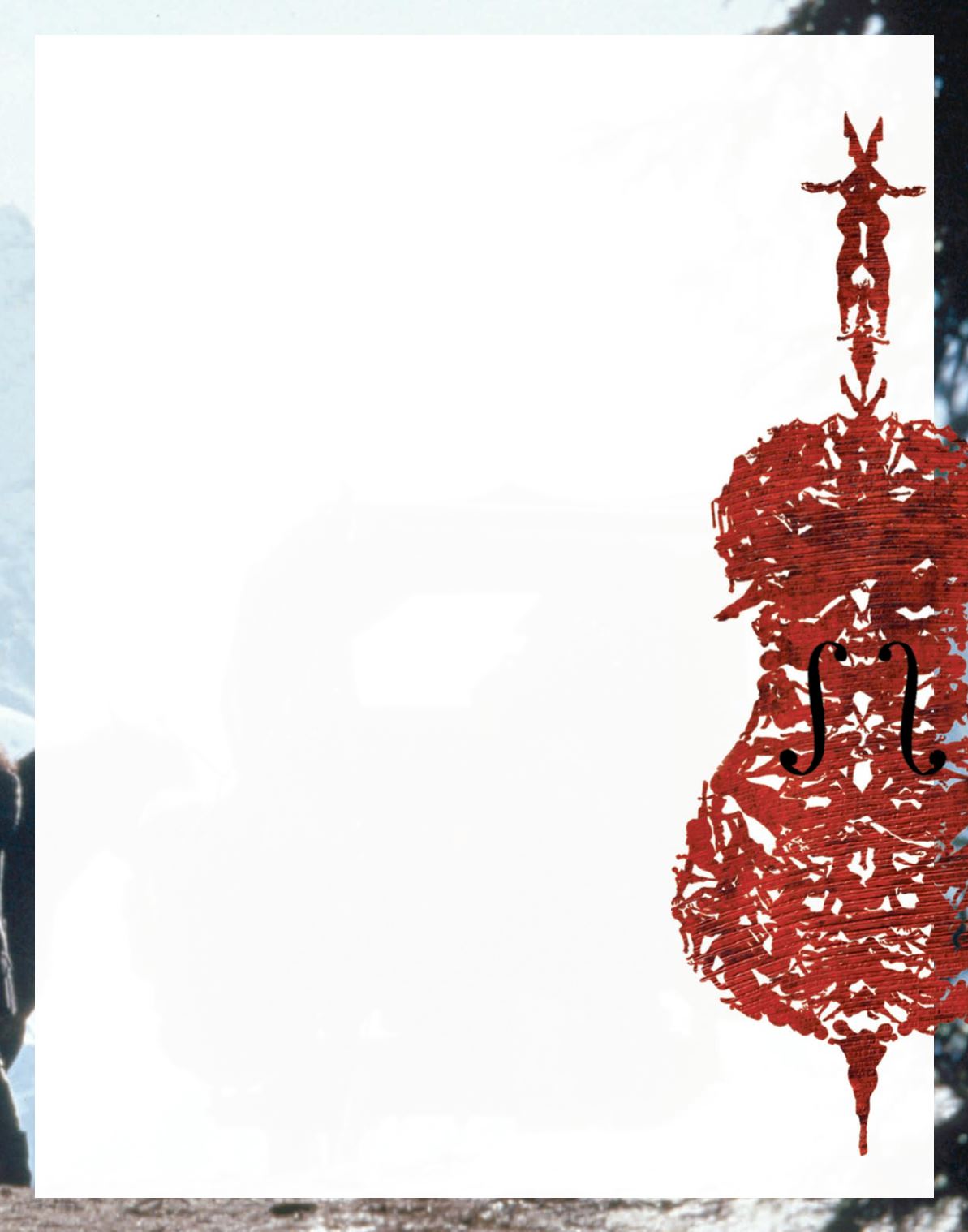
For starters, the entire premise of the lm,
that one individual instrument would be prized
and played by numerous generations of owners
over a period of centuries, is unique to the violin.
Star violinists in the modern age frequently use
instruments as old as
years; the same is not
true for other instruments, which at best end up in
museums by the time they reach that age. Even in
these days of “original instrument” performances
of old music, the overwhelming majority of the
winds and keyboards involved are merely copies of
historical models.
During the Renaissance, instruments were usu-
ally devised as a set, or “chest,” of the same general
design with di erent tonal ranges—soprano, alto,
tenor, and bass. In the modern orchestra, the violin
family (violin, viola, cello, and bass) is the only one
to appear regularly in that con guration. As such,
the string section virtually de nes an orchestra.
Toscanini, who seated the rst and second vio-
lins on opposite sides of the stage (unlike how we
typically see them today, with the cellos and basses
opposite the rst violins), famously referred to
them as “the shoulders of the orchestra.” Consider
the terminology: an ensemble comprising solely
members of the violin family is called a string
orchestra
, but an ensemble of all wind instruments
is called a “band.”
In
, during negotiations for Handel to
compose his immortal
Musick for the Royal
Fireworks
, he was informed that the king wanted
only “martial” music for the occasion “and said he
hoped there would be no ddles.” Handel reluc-
tantly complied and created a unique work for nine
horns, nine trumpets, twenty-four oboes, twelve
bassoons, and four sets of timpani. But when Han-
del conducted the same work a month a er its pre-
miere, he added a full complement of strings. To a
composer like Handel, strings were indispensable.
e violin family is the one for which more
chamber music has been written than any other.
e repertoire abounds with hundreds, if not thou-
sands, of string quartets, but one would be hard-
pressed to compile a lengthy list of compositions
that have been written for, say, four utes or four
clarinets. Certainly they exist, but as a specialty or
novelty rather than the string quartet’s status as the
quintessential chamber ensemble.
Much of that has to do with the unique sonority
of a violin, which the
New Grove Dictionary
hails as
“one of the most perfect instruments acoustically.
… In beauty and emotional appeal, its tone rivals
that of its model, the human voice. … In short,
the violin represents one of the greatest triumphs
of instrument making.” A major element of that
emotional appeal is an inescapable association
with romance; if you dine in a ne restaurant,
the musician who serenades you and your date at
your table is more apt to be playing a violin than a
French horn or oboe.
is is especially true when you begin to mul-
tiply the musicians. Within the orchestra, violins
vastly outnumber any other instrument, and the
amassing of multiple string instruments has been a
tradition for centuries. Old King Cole, who “called
for his ddlers three,” was signi cantly outdone
by Louis XIII in
with the establishment
of his
Vingt-quatre Violons du Roi
( e
King’s Violins), an ensemble whose
fame was celebrated throughout Europe
for more than a century. A much more
recent example of this phenomenon
was the famous “easy listening” ensem-
ble known as
Strings. e brand was
born in
when producer David L.
Miller contracted the Northwest Ger-
man Radio Orchestra of Hamburg for a
series of romance-themed albums with
the same string-heavy sound that had be-
come the sonic signature of Mantovani’s lush
orchestrations or Jackie Gleason’s bestselling
“Music for Lovers Only” albums. Over a
period of three decades, the
Strings
would crank out over
albums and
became a household name. At the
end of one of his television shows,
the musician/comedian Spike
Jones joked that his guest the
following week would be “
Strings—only one violin, but it’s
a big one!”
For his
debut album,
country/western superstar Alan
Jackson wrote a song with the
refrain,
She loves a violin, I love a ddle.
We go separate ways but we meet in the middle.
Don’t see eye to eye, but we’re hand in hand—
A blue-blooded woman and a red-neck man.
Besides becoming a hit music video, the song
underscores a unique dichotomy of the violin’s
personality, namely its ability to move e ortless-
ly from the Metropolitan Opera House to the
Grand Ole Opry. More than perhaps any other
© RHOMBUS MEDIA
AUGUST 20 – SE3TEM%ER 2, 2018 | RAVINIA MAGAZINE
37








